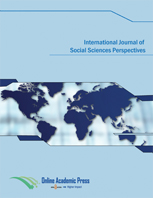The Dilemma of Determining Urban Administrative Boundary for Land Administration: The Case of Shire Inda Silase
DOI:
https://doi.org/10.33094/7.2017.2018.22.126.160Keywords:
Urban Boundary, Demarcation, Urban Administration, Urban Land Administration, Dilemma.Abstract
This investigation is undertaking on the topic of “The Dilemma of Determining Urban Administrative boundary for land administration”. Different studies of well-respected scholars address that boundary issue come to realize at the recent times following to the intolerable environmental destruction and other problems which had result due to uncontrolled urban growth. Those studies try to assure that urban or city agglomerations accommodate wide horizontal expansion which in turn puts an effect on the life of Peri-urban farmers, the environment, and the ecosystem to the extent of being not rehabilitated. Many studies point out that the considerable number of environmentalists, planners and city administrators came to stand against sprawl campaign and deal with the demarcation of a boundary on their cities and towns. Many metropolitan and megacities of USA were an exemplary role in practicing demarcation. Different studies also address that, though it is different in kind and importance, an absence of demarcated municipal administrative boundary also come a big concern-able issue to the town and cities of both developed and developing countries. As different studies explained it is this issue which our country starts to worry and deal with. However, cities and towns of ours had not demarcated their boundary yet including the study area of this investigation. Because of the absence of demarcated boundary in the study area, problems like conflicts regarding double ownership claim, informal expansion, etc. widely happen. This is the reason for why the researcher conducts this investigation. The researcher used a descriptive method and employed both quantitative and qualitative approaches. The researcher also used questionnaire (open and closed-ended), Interview (semi-structured) and observation (structured) data collection methods. This study used both primary and secondary data sources. The researcher analyzed and presented results using tables, bar graph and figure. The investigation, therefore, assessed that lack of determining one's boundary had put many problems such as planning over hedge of the town administration with the neighboring ‘wereda’ administration, conflicts on double ownership claim, destruction to the surrounding environment and the life of other residents, or generally put many problems to Shire Inda Silase town. So, the researcher recommends that the city administration of Shire Inda Silase need to develop collaborative and cooperative work habit with its neighboring rural wereda administration, with Shire Inda Silase city development stakeholders (Such as planning and consultancy office), with other concerned bodies like the Tigray Planning bureau, and with federal governments.




